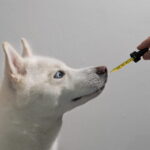As a new dog owner, you’re bound to encounter behaviours from your furry companion that might leave you scratching your head. One such behaviour is humping, also known as mounting. While it can sometimes be a source of awkwardness or embarrassment, it is a fairly common occurrence seen in dogs, regardless whether you got a small adorable Toy Cavoodle or a gigantic Huskies.
To effectively manage and respond to this behaviour, it’s crucial to understand the root causes, which can be both biological and behavioural. We’ll also provide guidance on managing this behaviour in your dog.
Why Do Dogs Hump Things?
Before diving in, it’s essential to grasp that humping, while often perceived in a specific sexual context due to human norms, carries different connotations in the canine world. Dogs do not adhere to human perceptions of modesty or appropriateness; they simply behave in ways that are natural and instinctive to them.
https://www.pexels.com/photo/positive-female-friends-squatting-with-playful-dogs-in-countryside-4148871/
Biologically speaking, humping can be linked to reproductive instincts. In male dogs, particularly those that have not been neutered, the drive to hump can be fueled by a higher level of hormones, such as testosterone. These hormones can urge dogs to engage in mating behaviours, even in non-mating contexts. But it’s not just male dogs – female dogs also engage in humping, indicating that while hormones may play a part, they aren’t the whole story.
It’s also important to note that even spayed or neutered dogs might hump. This suggests that, apart from the procreative drive, there are other factors at play. These factors fall under the realm of behaviour and social communication. Humping, like many other dog behaviours, can be a form of communication or a response to certain stimuli or situations.
Sometimes, humping is merely an expression of playfulness, especially in younger dogs. Puppies exploring their environment and interactions often use humping as one of many ways to interact with their surroundings. It is a part of their learning process, helping them understand their world and the reactions their actions evoke. This behaviour can decrease as they mature and their interactions diversify.
Another reason a dog may hump is to exert social status or control. While theories linking humping solely to dominance have been debunked, it’s observed that in certain contexts, dogs might hump to communicate social status. It doesn’t necessarily imply aggression; it’s more about signalling self-assurance or control in a situation. However, if this behaviour leads to conflict or stress with other dogs, it’s a sign that intervention might be required, especially if the other dogs react negatively and put your dog or other people at risk.
Excitement or stress can also trigger humping in dogs. When the emotional intensity rises during play or in unfamiliar or stressful situations, dogs may resort to humping as a coping mechanism. If your dog humps when they’re excited or anxious, it might be their way of dealing with overwhelming emotions. Understanding this can help you better support your pet in managing these emotions.
In some instances, dogs hump as a means to seek attention. If their humping behaviour garners strong reactions, be it shock or laughter, they might continue or increase the behaviour to gain more attention. It’s a clear case of any attention, even negative attention, being better than no attention at all.
Lastly, there’s a possibility that a medical issue might lead to excessive humping. Certain medical conditions, such as urinary tract infections or skin allergies, could cause discomfort leading to humping. If the behaviour is paired with other signs of distress, it warrants a visit to the vet to rule out medical problems.
How to Prevent Dogs From Humping Things
Now that you understand why dogs hump, you might be wondering how to manage this behaviour. The key lies in understanding, patience, and consistency. If the humping is hormone-driven, neutering or spaying your dog might help reduce the behaviour. However, it may not eliminate it entirely, especially if it’s been ingrained as a habit.
If the behaviour is linked to stress or excitement, identifying and addressing the underlying triggers can help. This might involve creating a calmer environment or using positive reinforcement training techniques to encourage alternate behaviours.
Consistent redirection is another powerful tool. When your dog starts to hump, distracting them with a toy or a command and rewarding them for shifting their attention can gradually discourage the behaviour.
If the problem becomes too serious, engaging a professional dog trainer or certified canine behaviourist might be beneficial. If you suspect a medical issue, a consultation with your vet is a must. They can provide a thorough health check and guide you on how to manage the behaviour.
Conclusion
Humping in dogs is a complex behaviour influenced by various biological and behavioural factors. By understanding these factors and adopting a patient, understanding approach, you can foster a healthier and more respectful relationship with your dog. Remember, each dog is unique, and what works for one may not work for another. Living with a dog is a journey of understanding and growth for both them and for you, and the more you learn about why they do what they do, the better prepared you’ll be to make their lives as fulfilling and rewarding as possible.












